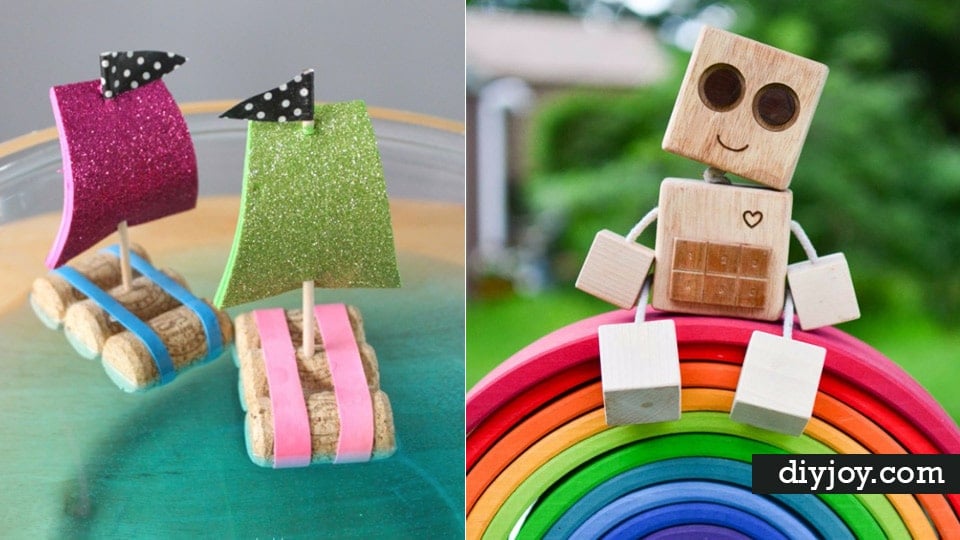
DIY ideas easy for kids are a wonderful way to nurture creativity and problem-solving skills in young minds. Engaging kids in hands-on activities not only encourages imagination but also fosters a love for learning and exploration. Many parents seek easy and fun activities that support their child’s development and offer a sense of accomplishment. This article will explore a range of simple DIY projects suitable for children of all ages, tailored to nurture their curiosity and inspire them to create. We’ll delve into accessible materials, step-by-step instructions, and tips to ensure the process is both enjoyable and educational. We’ll be covering various categories, from arts and crafts to science experiments, providing clear and concise instructions, ideal for families who want to participate in constructive activities.
Simple Craft Ideas That Spark Creativity
Paper Plate Crafts
Paper plates are a versatile and readily available material perfect for crafting a wide array of projects. These are ideal for budding artists of all ages. Children can transform simple paper plates into a variety of fun things, from colorful flowers and butterflies to whimsical animal masks or personalized plates.
Recycled Material Creations
Encourage creativity with repurposed materials. Old containers, cardboard boxes, and plastic bottles can be transformed into imaginative creations. These are great for sparking imagination and teaching children about resourcefulness and sustainability.
Nature-Inspired Art
Nature provides endless inspiration! Gather leaves, twigs, and flowers from your surroundings. Use these as starting points for painting, collage, and creating unique sculptures.
Playdough Creations
Playdough is a fantastic sensory and creative tool. Children can develop their fine motor skills by sculpting animals, objects, and characters. Playdough can also be a great medium for introducing color mixing and exploration.
Related Post : How Much Is Home Improvement Insurance
Decorate Your Own Clothes
Kids can personalize their clothes with paint, stickers, and fabric markers. This is a great way for them to showcase their individual styles and personalize their wardrobe.
DIY Projects for Science Exploration
Homemade Slime
Slime is a fun and engaging science experiment that teaches about polymers and viscosity. The process is simple, and children can easily experiment with different colors and textures, gaining a basic understanding of scientific concepts.
Lava Lamps
Lava lamps are captivating visual experiments that demonstrate density differences. Creating a homemade lava lamp is a fantastic hands-on way to learn about the physics of liquids.
Homemade Volcanoes
A homemade volcano is a classic science project that combines visual interest with hands-on learning. Kids can learn about chemical reactions and the principles of eruption through this project.
Growing Crystals
Growing crystals is a visually appealing science experiment. Children can learn about crystal formation and the growth process with this engaging activity.
Building Simple Machines
Encourage engineering concepts by building simple machines such as levers, pulleys, and gears using recycled materials. These projects offer an understanding of basic mechanical principles.
Easy DIY Projects for Home Decor
Painted Stones
Collect smooth stones from the environment, and let your child paint them to create colorful garden decorations or tabletop displays. This is a simple yet effective way for children to express themselves artistically.
Paper Mache Animals
Use paper mache to craft fun and decorative animals. Children can create unique animal figures that can be displayed or used in pretend play.
Create a Mini Garden
Plant seeds in small pots or containers and encourage children to nurture these mini gardens. This activity cultivates a love for nature and teaches responsibility.
Craft a Photo Frame
Use cardboard and paint to create an unusual and individualized photo frame. This project teaches about shape, color, and design principles.
Make a DIY Mobile
Create a mobile with recycled materials such as bottle caps, colorful paper, and beads. This is an engaging and artistic way to teach children about balancing and design.
Tips for Successful DIY Projects with Kids
Choose Age-Appropriate Projects
Select projects that align with the child’s developmental stage and skill level. Begin with simpler projects and gradually introduce more complex tasks as their abilities improve.
Provide Clear Instructions
Provide step-by-step instructions that are easily understandable and follow. Visual aids, like diagrams or photos, can significantly enhance the process.
Make it Fun
Focus on making the process enjoyable. Create a positive atmosphere where children feel comfortable taking risks and making mistakes without fear of judgment.
Encourage Exploration and Creativity
Allow children to explore and express their creativity freely, encouraging them to personalize their creations and adapt the instructions.
Celebrate Small Victories
Acknowledge and celebrate every step of the process, fostering a sense of accomplishment and promoting a positive attitude toward learning.
Safety Precautions for DIY Projects
Parental Supervision
Always supervise young children during DIY projects to ensure their safety and prevent accidents.
Use Appropriate Tools and Materials
Ensure all tools and materials used are safe for children’s use, avoiding potential hazards like sharp objects or toxic substances.
Teach Basic Safety Rules
Incorporate safety guidelines into the project instructions, covering aspects such as handling tools properly, using caution around fire or water, and avoiding ingesting materials.
Choose Age-Appropriate Materials
Be certain to use materials that are not a choking hazard or pose a danger to children.
Create a Designated Workspace
Establish a dedicated area for DIY projects, ensuring it is well-organized, well-lit, and free from distractions and hazards.
In conclusion, DIY projects are a fantastic way for kids to develop crucial skills and have fun. From building simple structures to crafting unique creations, there’s a multitude of possibilities waiting to be explored. The key is to start small, embrace mistakes, and most importantly, have fun! Encourage your children to experiment, ask questions, and let their creativity shine. For further inspiration, check out resources online or visit local craft stores. Inspiring young minds through DIY projects is a rewarding experience for both parent and child.